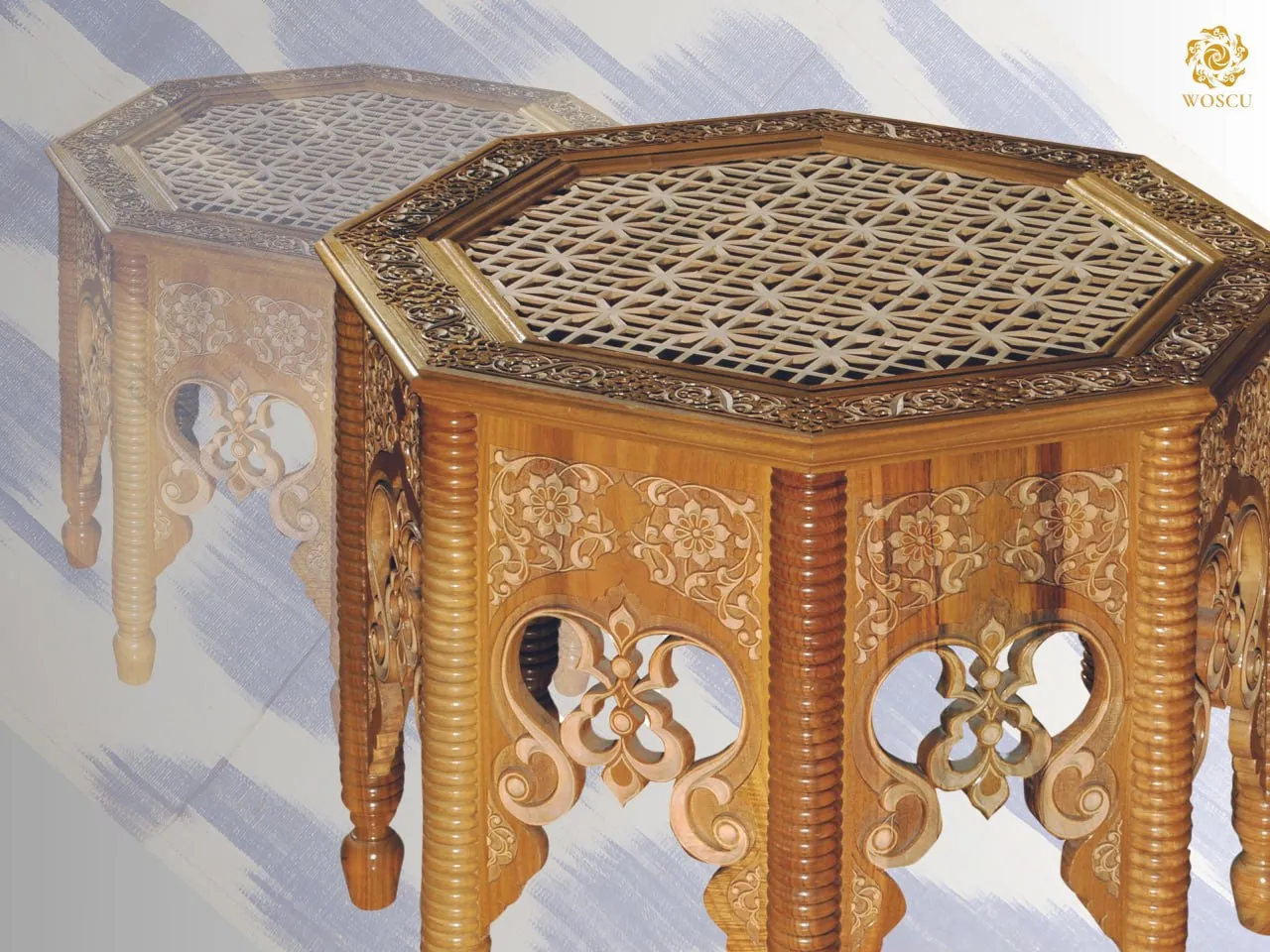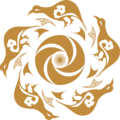
Due to the fragility of the material and the natural and climatic conditions of our region, not so many ancient examples of these related types of applied art have survived. But those that survived attract attention with the skill of the work. By the late 18th century, local schools and woodcarving centers had developed in the territory of the Uzbek khanates. This craft was especially developed in Khorezm, Kokand, Tashkent and Bukhara.
Tashkent craftsmen traditionally used carving with an in-depth background in combination with pargori. This technique allows you to create exquisite islimi floral patterns in combination with a geometric pattern.
The Museum exhibits hexahedral and octahedral tables – khan-takhta, lyagans and caskets of representatives of this school of woodcarving – hereditary carvers Z. Kariev, M. Ashirov, S. Rakhmatullaev, and M. Ibragimova. In the design of their products, they use multi-layer carving, combining different styles in a single composition. E.g., the Baghdadi style which is more common in the borders can be combined with the flat-relief geometric pargori carving. Carvings with a deeper background are used for islimi floral ornaments.
You can learn more about the topic in the book-album "The Collection of the State Museum of Applied Art and Handicraft’s History of Uzbekistan" (XXXIX volume) from the series "The Cultural Legacy of Uzbekistan".
The main sponsor of the project is the oilfield services company Eriell-Group.
